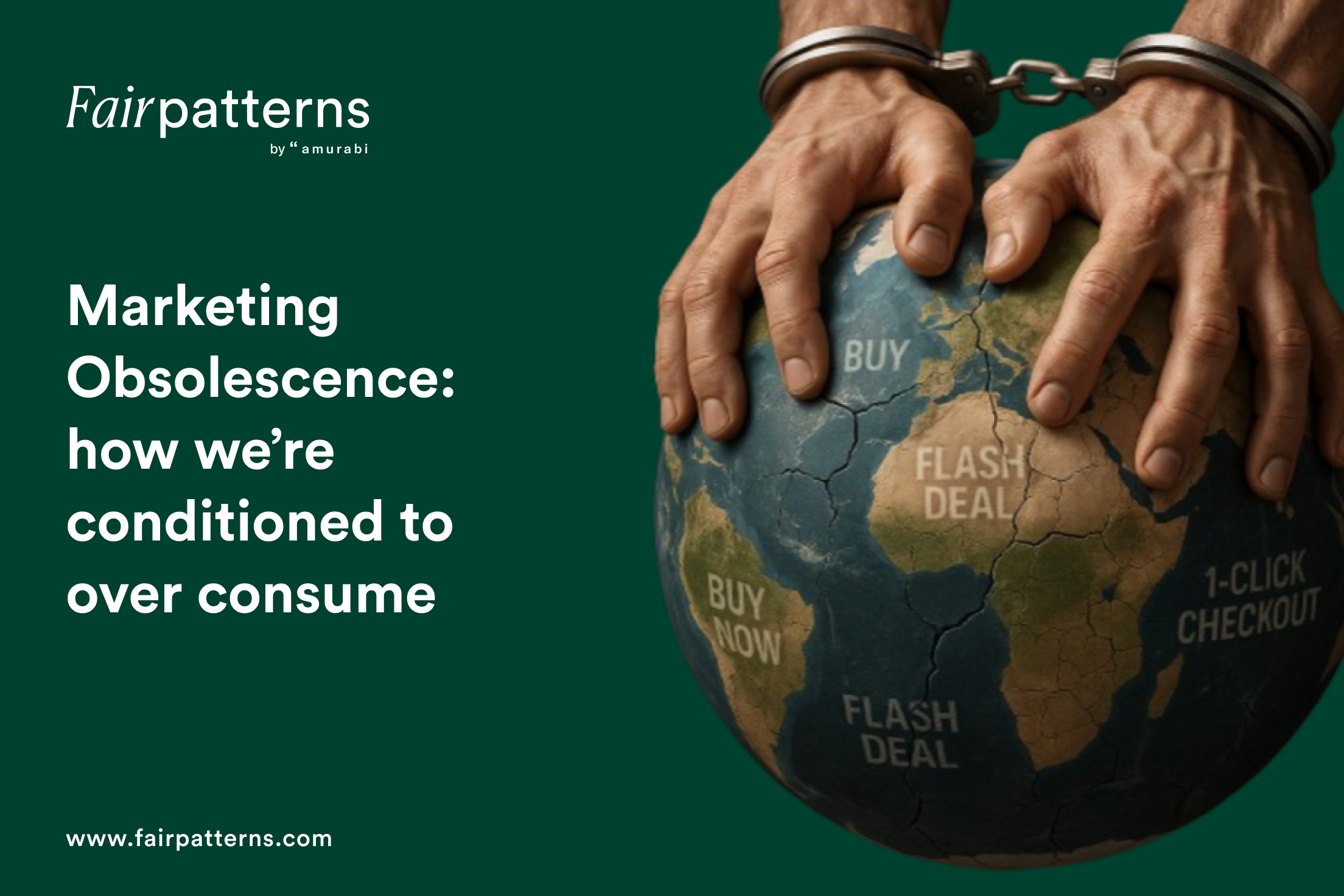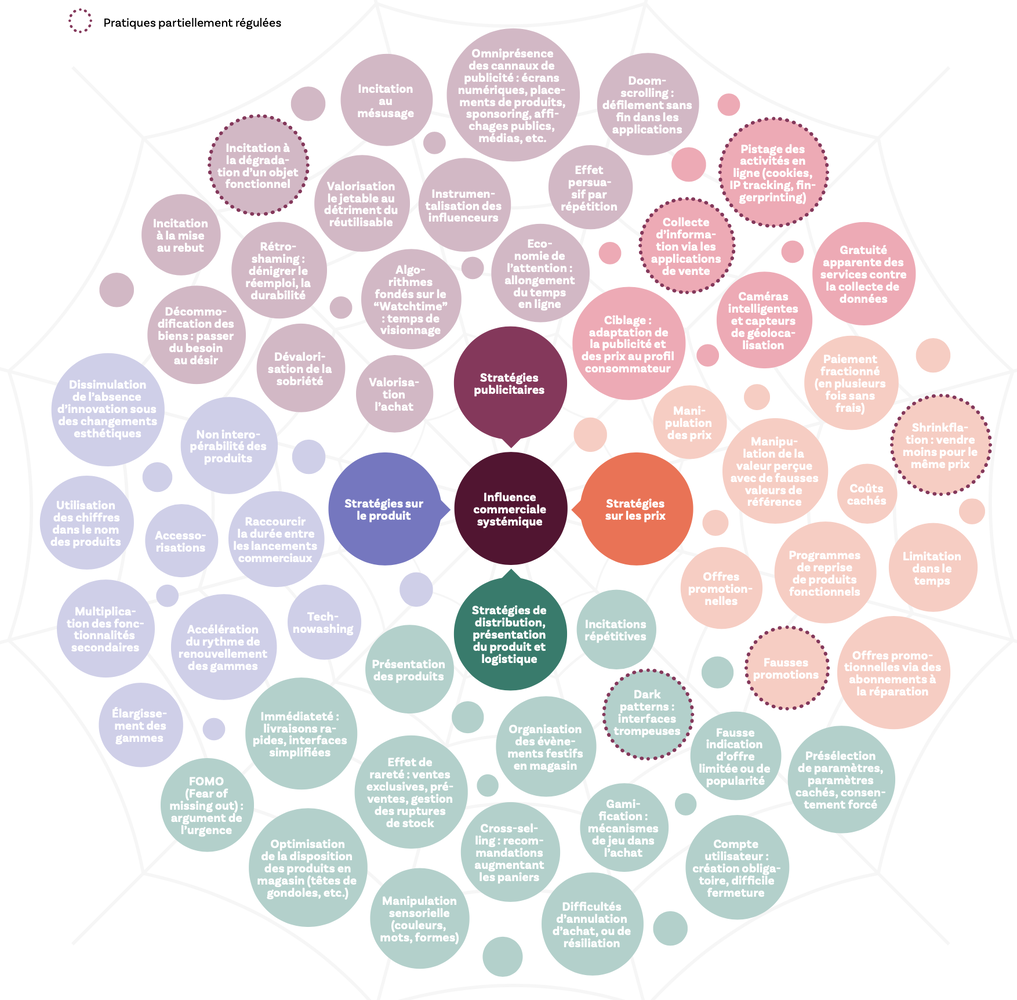Marketing Obsolescence: How We’re Conditioned to Over consume

From Choice to Conditioning
Are we really choosing what we buy; or are we being conditioned to consume?
In the digital marketplace, the way we shop is shaped by more than just personal need or preference. Strategic design choices, from countdown timers and reward systems to curated recommendations, are deliberately built to influence behavior.
Consider the experience of shopping for a new phone. You compare models online, and almost instantly, you're surrounded by messages: Only 2 left in stock, Limited-time deal,Buy now-pay later, or Customers also bought. It's no longer just about the product, it’s about urgency, social proof, and maximising your cart.
Individually, these tactics may seem harmless. But over time, and especially when combined, they create a shopping environment that prioritizes consumption over intention. According to the Global Footprint Network, humanity is consuming resources at a rate 1.75 times faster than the Earth can regenerate them, and we would need five Earths to sustain our current lifestyle. And earlier this week, that pattern was brought into question.
HOP Takes Aim at Marketing Obsolescence
On June 25, the French advocacy group Halte à l'obsolescence programmée (HOP) publicly condemned what it calls “marketing obsolescence” and the widespread encouragement of overconsumption. The association is urging public authorities to regulate these practices more strictly.
Among its key proposals, HOP calls for the creation of a legal offense of “marketing obsolescence,” empowering advertising regulators with sanctioning authority, and the development of a national roadmap for sustainable marketing and responsible consumption.
According to HOP, these measures are needed to reduce the systemic pressure on consumers to buy more than they need, especially when marketing techniques work together to create a cumulative and often subconscious influence.
The Impact of Manipulative Design

To support its position, HOP published a detailed report cataloging the wide range of marketing tactics that encourage unnecessary purchases. While many of these tactics may seem harmless in isolation, the report argues that their combined effect is powerful and damaging. The association links these strategies to a web in which consumers are trapped, manipulated, and conditioned, often without realizing it.
Dark Patterns: The Hidden Drivers of Consumption
One of the marketing techniques condemned in the report are Dark patterns:
- 90% of consumers have already been affected by dark patterns (OECD).
- Temu, AliExpress, and Amazon ranked as top users of dark patterns (UFC-Que Choisir).
- Gamification on platforms like Temu leads users to spend an average of 23 minutes per session vs. 13 minutes on Shein - which has just been fined €40M for misleading prices and other offences.
Most common dark patterns:
- Sensory manipulation: Making certain options (like paid subscriptions) more visually prominent than neutral choices.
- Gamification: Using game-like features (e.g. prize wheels, reward systems) to build daily usage habits and addictive behavior.
- Fake scarcity and urgency: use countdown timers and low-stock alerts to pressure purchases, often backed by offers that aren’t genuinely limited.
- Social proof fabrication:Labels like “bestseller,” “trending,” or displaying inflated sales stats to create perceived popularity.
- Cross-selling: Promoting additional items at checkout to inflate basket size (e.g., “complete the look” on Asos).
- FOMO (Fear of Missing Out): Leveraged through fast delivery promises, rapid checkout (“1-click”), and ephemeral deals to encourage impulsive spending.
- Obstructive Design: Making it hard to unsubscribe, cancel, or opt out of offers.
A Moment for Reflection:
As digital marketing practices continue to shape consumer habits, HOP warns that these techniques are no longer isolated, they are part of a broader system that encourages overconsumption.
To respond, HOP is calling for concrete action: the recognition of “marketing obsolescence” as a legal offense, the empowerment of advertising regulators with sanctioning authority, and the development of a national roadmap to guide sustainable and responsible marketing practices.
These proposals aim to shift the current model, from encouraging compulsive buying to supporting informed, intentional consumption.
When urgency becomes a default, through timers, fake scarcity, or emotional tricks it stops being marketing and starts being manipulation.
The damage? Consumer pressure, broken trust, and growing legal risk.
FairPatterns helps you fix that:
Our AI-powered tools detect dark patterns and other digital violations across the user journey 100x faster than manual audits, while our AI agent for designers empowers them to avoid creating deceptive interfaces at the design stages.
Let’s redesign urgency into clarity; connect with us : https://www.fairpatterns.com/contact-us
Références :
Halte à l’Obsolescence Programmée. (2025, 3 juillet). Rapport HOP sur l’obsolescence marketing | HOP. HOP. https://www.halteobsolescence.org/publication/rapport-obsolescence-marketing-complet/
How many Earths? How many countries? -Earth Overshoot Day . (2025, May 14). Earth Overshoot Day. https://overshoot.footprintnetwork.org/how-many-earths-or-countries-do-we-need/
















































